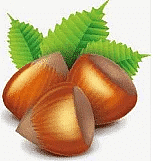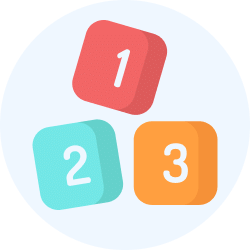Class 1 Exam > Class 1 Notes > English Grammar for Junior Classes > Worksheet: Sentences - 1
Worksheet: Sentences - 1 | English Grammar for Junior Classes - Class 1 PDF Download
Q1: Write D, Im, In, E beside each sentence.

(i) My teacher is nice. ________
(ii) Is my teacher nice? ________
(iii) Eat your vegetables. ________
(iv) Your teacher is nice! ________
(v) The squirrels gather hazelnuts. _______
(vi) Do the squirrels gather hazelnuts? _______
(vii) Gather those hazelnuts. _______
(viii) The squirrels gather nuts!

Q2: Fill in the Blanks:
(i) A sentence always begins with a _______.
(ii) A sentence ends with a _______.
(iii) Cats like to _______ with yarn.
(iv) We eat food with a _______.
(v) The sun is very _______.
(vi) Birds can _______ in the sky.
(vii) My favorite color is _______.
(viii) I brush my _______ every morning.
(ix) The cat is _______ the table.
(x) We use _______ to write.
Q3: True or False Questions.
(i) A sentence can start with a small letter.
(ii) A sentence can end with a question mark.
(iii) A sentence can end with a comma.
(iv) A sentence must always have a verb.
(v) A sentence can be very long or very short.
Q4: Choose the Odd One Out:
(i) Cat, Dog, Moon, Cow
(ii) Ball, Car, Banana, Bike
(iii) Red, Yellow, Green, Elephant
(iv) Run, Jump, Walk, House
(v) Apple, Orange, Mango, Fish
You can access the solutions to this worksheet here.
The document Worksheet: Sentences - 1 | English Grammar for Junior Classes - Class 1 is a part of the Class 1 Course English Grammar for Junior Classes.
All you need of Class 1 at this link: Class 1
|
18 videos|189 docs|31 tests
|
FAQs on Worksheet: Sentences - 1 - English Grammar for Junior Classes - Class 1
| 1. What are the main themes explored in the article? |  |
Ans. The article delves into themes such as community building, the importance of cultural preservation, and the impact of globalization on local traditions. Each theme is supported by real-life examples and case studies that illustrate the challenges and successes faced by various communities.
| 2. Who is the target audience for the article, and why is it relevant to them? |  |
Ans. The target audience for the article includes scholars, students, and anyone interested in cultural studies and anthropology. It is relevant to them as it provides insights into the dynamics of cultural identity and the factors affecting it in today's interconnected world.
| 3. How can readers apply the lessons from the article to their own communities? |  |
Ans. Readers can apply the lessons by actively participating in local cultural events, supporting local artisans, and promoting awareness about the significance of preserving cultural heritage. Implementing community initiatives that celebrate diversity can also foster stronger connections among residents.
| 4. What research methods were used in the article to gather information? |  |
Ans. The article utilized qualitative research methods, including interviews with community leaders and surveys distributed among local residents. Additionally, it analyzed existing literature and case studies to provide a comprehensive understanding of the subject matter.
| 5. Are there any key figures or organizations mentioned in the article that contribute to cultural preservation? |  |
Ans. Yes, the article highlights several key figures, such as cultural anthropologists and local activists, as well as organizations dedicated to preserving indigenous traditions. These entities play a crucial role in advocating for the rights of marginalized communities and ensuring their cultural practices are sustained for future generations.
Related Searches

















